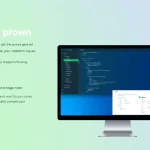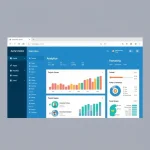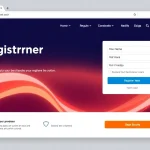Understanding Healthcare Informatics
In today’s digital age, the integration of technology into healthcare is not just beneficial; it’s vital. Healthcare informatics, at the intersection of information technology and health care, plays a crucial role in enhancing patient care, streamlining processes, and aggregating data for better decision-making. For extensive insights into this transformative field, relevant resources can be found at https://www.informaticsview.com.
What is Informatics and its Importance?
Informatics is the science that encompasses the systematic study of data, information, and knowledge processes. Within healthcare, informatics runs the gamut from managing electronic health records (EHRs) to data analytics that drives clinical decisions. This discipline integrates multiple fields, including computer science, healthcare, and behavioral science, to optimize patient outcomes.
Key Components of Healthcare Informatics
Healthcare informatics can be divided into several key components:
- Data Management: This encompasses the acquisition, storage, analysis, and sharing of health data.
- Information Systems: Tools and platforms that are used to collect data, such as EHRs and telehealth applications.
- Clinical Decision Support: Systems designed to enhance healthcare delivery by providing evidence-based recommendations.
- Health Information Exchange (HIE): The electronic sharing of health information among different healthcare organizations.
Current Trends in Health Informatics
Recent trends in health informatics illustrate a move towards more integrated solutions:
- Telehealth Expansion: The COVID-19 pandemic accelerated the adoption of telehealth, making it a staple in modern healthcare.
- Artificial Intelligence (AI): AI and machine learning technologies are increasingly being applied for predictive analytics and personalized medicine.
- Patient Engagement: Tools enabling patients to access their health records and engage similar tools are gaining traction.
- Interoperability: Efforts to ensure that various health IT systems share data seamlessly are becoming essential.
Applications of Informatics in the Healthcare Sector
Case Studies: Successful Implementations
Numerous case studies exemplify successful implementations of informatics:
For example, the implementation of Electronic Health Records at the Cleveland Clinic led to a 30% decrease in redundant tests and a 25% reduction in medication errors. Such statistics highlight the impact of informatics on enhancing efficiency and improving patient safety.
Tools and Technologies in Health Informatics
A variety of tools and technologies empower healthcare informatics:
- Electronic Health Records (EHR): Central to modern healthcare, EHRs allow for improved data management.
- Clinical Decision Support Systems (CDSS): These systems assist healthcare providers with clinical decisions.
- Telemedicine Software: Applications that facilitate remote consultations.
- Data Analytics Platforms: Tools designed to analyze vast amounts of healthcare data for insights.
Challenges in Adoption and Usage
Despite their many benefits, the path to adopting health informatics is not without challenges:
- Data Privacy and Security: The risk of data breaches poses significant concerns for patient confidentiality.
- Resistance to Change: Healthcare staff may resist integrating new technologies due to fear of the unknown.
- Integration Issues: Disparate systems can create barriers to efficient data sharing.
- Funding Constraints: Financial limitations may impede the full adoption of informatics solutions.
The Role of Data in Patient Care
Data Management and Security Best Practices
Efficient data management is critical for ensuring accurate and timely patient care:
Some best practices include:
- Data Encryption: To protect sensitive information both in transit and at rest.
- Access Control: Limiting data access to authorized personnel only.
- Regular Audits: Conducting audits to assess data integrity and security.
- Education and Training: Ensuring that all personnel are trained in data security measures.
Utilizing Big Data to Improve Outcomes
Big data analytics provides healthcare providers with valuable insights that can lead to improved patient outcomes. Data collected from various sources, like wearables and health applications, can be leveraged to:
- Identify Trends: Detecting trends in patient populations can inform preventive measures.
- Personalize Treatments: Tailoring treatment plans based on data-driven insights can enhance effectiveness.
- Optimize Resource Allocation: Analyzing data can aid in the effective distribution of healthcare resources.
Real-Time Data Usage in Clinical Decision Making
Real-time data has become a fundamental component in clinical decision-making:
This is achieved through various technologies, including:
- Wearable Devices: Collecting health metrics in real time to enable proactive care.
- Mobile Health Apps: Allowing patients and clinicians to share vital health information instantly.
- Remote Monitoring Systems: Enabling continuous observation of patients’ conditions from afar.
Future Directions in Healthcare Informatics
Innovations Shaping the Future of Healthcare
The future of healthcare informatics promises exciting innovations:
- Blockchain Technology: Enhancing data security and patient consent processes.
- Expanded Use of AI: With machine learning algorithms, healthcare will see advancements in diagnostic processes.
- Telehealth Integration: Continued growth in telehealth services will become integral in managing chronic diseases.
Education and Training for Informatics Professionals
As the field of informatics continues to evolve, so too does the need for educated professionals:
Educational pathways now include:
- Master’s Programs: Specialized degrees in health informatics and related fields.
- Certifications: Various certifications that validate expertise in informatics technologies.
- Workshops and Webinars: Ongoing training to keep professionals up-to-date with technological advancements.
Interdisciplinary Collaboration in Informatics
The need for collaboration between healthcare practitioners, IT professionals, and healthcare administrators has never been more critical:
This interdisciplinary approach ensures that solutions are comprehensive, addressing both healthcare delivery and data management needs effectively.
Resources for Further Learning
Top Publications in Health Informatics
Continued learning is essential in this fast-paced field. Some key publications include:
- Journal of Medical Internet Research: Focuses on digital health research.
- International Journal of Medical Informatics: Covers all aspects of medical informatics.
- Health Informatics Journal: A peer-reviewed journal offering insights and research findings in the field.
Professional Organizations in the Field
Joining relevant professional organizations can provide valuable networking opportunities and resources. Key organizations include:
- American Medical Informatics Association (AMIA): A leading organization dedicated to advancing the field.
- Health Information Management Association (HIMA): Focused on health information management standards.
- International Medical Informatics Association (IMIA): A global organization promoting health informatics worldwide.
Online Courses and Certification Programs
Various online platforms offer courses and certification in health informatics:
Recommended platforms include:
- Coursera: Offers courses from leading universities on health informatics.
- edX: Features certifications from institutions like Harvard and MIT.
- FutureLearn: Provides various short courses in digital health and informatics.








